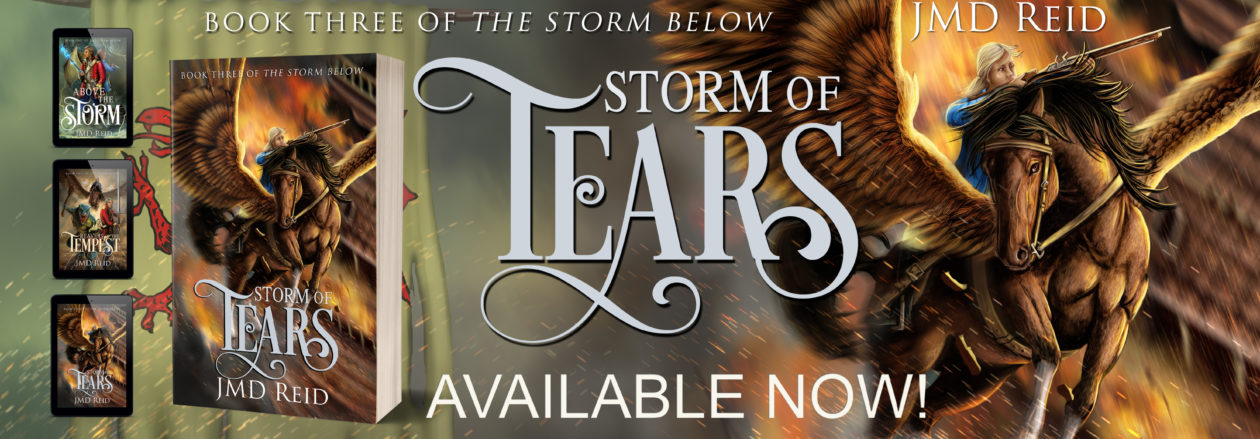Killing your Characters or Writers are Monsters
In the latest novel I’m writing, Reavers of the Tempest (Book Two of the Storm Below), I came to the point where I killed a major character. I was torn up inside. I grieved for this fictitious person even as I wrote the words that condemned the character to death. I felt like a complete monster. I felt real guilt in the moment of writing.
For me, the characters I write are almost real people. I think about them, putting myself into their heads. I have to believe they’re real so I can capture their personalty. My characters are almost my friends, or at least casual co-workers.
And then you come to that point where you kill them. You have to harden your heart. You have to set aside the care you feel for this imaginary character and thrust the dagger into their backs. And then you have to write their deaths. You have to get into their minds and experience the loss and fear all for the service of your story.
Because that’s why you’re killing the character. For the story. After breathing life to this fictitious person, you lead them into circumstances and pull the rug out from under them. They lose all those dreams and hopes, their plans for the future. It all ends abruptly because you have a story to tell.
To be a writer, you have to be a little monstrous. You have to be willing to put your imagination into the darkest parts of life and humanity. As William Faulkner put it, “In writing, you must kill all your darlings.” You need to be prepared to do what it takes for the service of your story. You can’t flinch. You have to harden your heart and plunge the dagger into your character’s back even if they don’t deserve it.
Even though I felt like a monster for killing my characters, I’m sharpening my knife. The story must be satisfied. I cannot flinch. Without risk and conflict, a story is a limp, boring affair.

Excellent dude, in my trilogy of dance with the devil on a pale moon’s night. i had to kill her- she wanted to die my beloved BEBE-so i killed her and would gladly kill again and again to keep the the story ALIVE. C U ON THE WEB DUDE… HE’S ALIVE HE’S ALIVE JMD HAHAHA…
ALEX YOUR NEW BUDDY if u want a new buddy? i don’t know, he doesn’t have to many. He talks and sees dead people and that’s the truth … We’re authors and writers JMD THAT’S WHAT WE DO… KILL PEOPLE
Thanks, Alex.
This was well said. It reminded me of the fact that when we write, or create anything creative,for that matter what we create tends to take on a life of it’s own.
I have been considering adding a lot more storytelling into my name n fictional articles and words have reminded me that the more passion we put into our writing, the better the story will be.
Exactly. Passion is so important! And I did that edit you asked for.
Thanks for responding so quick. Hate to look like a spammer.
It’s okay.
You make a great point here: it’s for the story. I would go further and say that you have to stand firm against voices of readers who protest that you don’t have “HEA” (happily ever after) and they don’t want the character killed off. It’s like telling an artist to not use red because the viewer doesn’t happen to like it best. You do what is right for the quality of the tale you are spinning, because you have that right, because only you know best.
Yeah, I’m writing a novel and one of my beta readers was talking about a pair of characters and there HEA and I was planning on killing one of those characters in the current book.
I enjoyed this post. I haven’t had to kill off a main character yet, but I do feel it coming.
Good look! Glad you enjoyed the post.